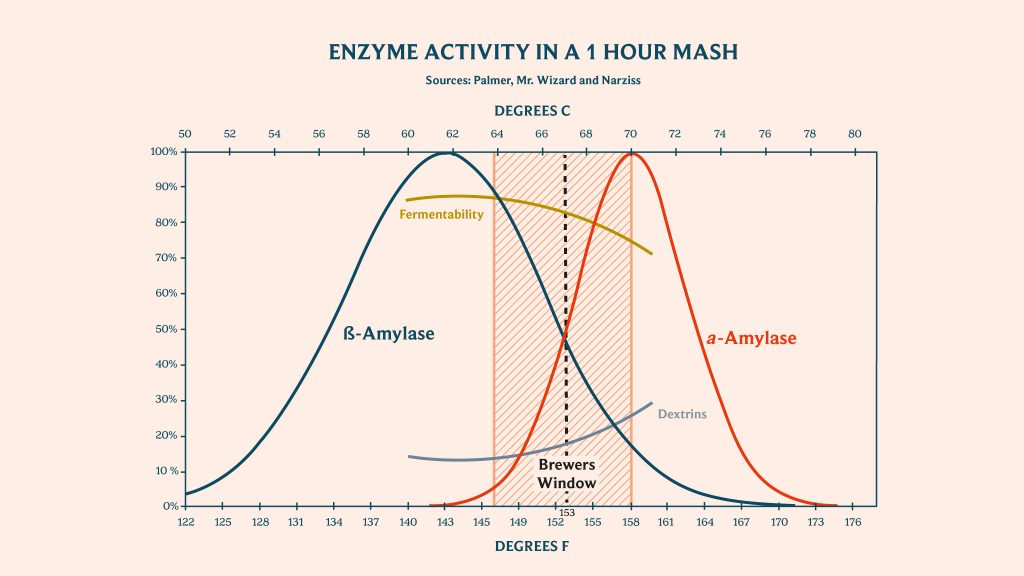ihavenonickname
Well-Known Member
I'd like to try out overnight mashing with multiple steps. And I'm having a hard to wrapping my head around how this will affect the body and finishing gravity of my beer.
My plan is to mash in and follow this program:
146F for 120 minutes
156F for 120 minutes
161F for 30 minutes
172F for 4 hours... or less.
This will allow me to wake up, lift the basket, sparge and boil
My questions:
Would this lead to an highly attenuative wort?
Would it lead to a full bodied wort?
If I wanted it to lean more dry/alttenuative (for a WCIPA) what adjustments should I make?
If I wanted to make it fuller bodied (for a NEIPA) what adjustments should I make?
Does a step in the 158-160 build dextrins and body the longer it goes?
Any other recommendations for mashing over night but still having some control over body?
This chart is a helpful point of reference

My plan is to mash in and follow this program:
146F for 120 minutes
156F for 120 minutes
161F for 30 minutes
172F for 4 hours... or less.
This will allow me to wake up, lift the basket, sparge and boil
My questions:
Would this lead to an highly attenuative wort?
Would it lead to a full bodied wort?
If I wanted it to lean more dry/alttenuative (for a WCIPA) what adjustments should I make?
If I wanted to make it fuller bodied (for a NEIPA) what adjustments should I make?
Does a step in the 158-160 build dextrins and body the longer it goes?
Any other recommendations for mashing over night but still having some control over body?
This chart is a helpful point of reference



